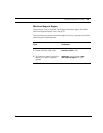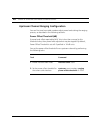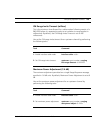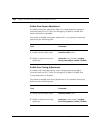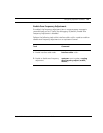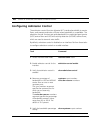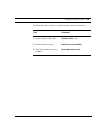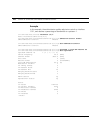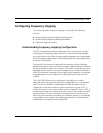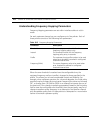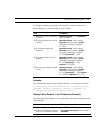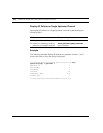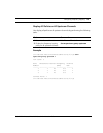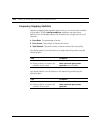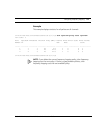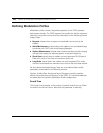
Cuda 12000 IP Access Switch CLI-based Administration Guide
Configuring Frequency Hopping 411
Configuring Frequency Hopping
This section describes frequency hopping, and includes the following
sections:
■ Understanding Frequency Hopping Configuration
■ Understanding Frequency Hopping Parameters
■ Frequency Hopping Statistics
Understanding Frequency Hopping Configuration
The ADC Policy-based Frequency Hopping function continuously monitors
the quality of the upstream spectrum that is in use to avoid unacceptable
error rates due to noise. When the plant quality degrades to an unacceptable
level, the operating parameters of the tuned upstream are adjusted based on
the policy configuration.
The quality of the channel is measured using spectrum quality indicators
based on frame error rate. The frame error rate is determined by monitoring
the pre and post Forward Error Correction (FEC) rates. The frame error rate is
averaged over an amount of time and compared to a configured threshold.
When the threshold is exceeded, the currently tuned upstream is considered
a degraded spectrum and a decision is made based on the policy for this
channel.
The Cuda 12000 allows you to configure a threshold that is used to
determine when the upstream spectrum has degraded to an unacceptable
level. This error threshold is a percentage of frames received in error in
comparison to the total number of frames received not in error. If FEC is
used, then frames in error is the number of pre and post FEC errors. If FEC is
not being used, then the number of frames in error is the number of invalid
frames received. This error threshold is averaged over an amount of time.
When the error threshold is exceeded, the upstream spectrum is considered
unacceptable and a change in the operating parameters for the channel is
made based on the policies that are specified.



